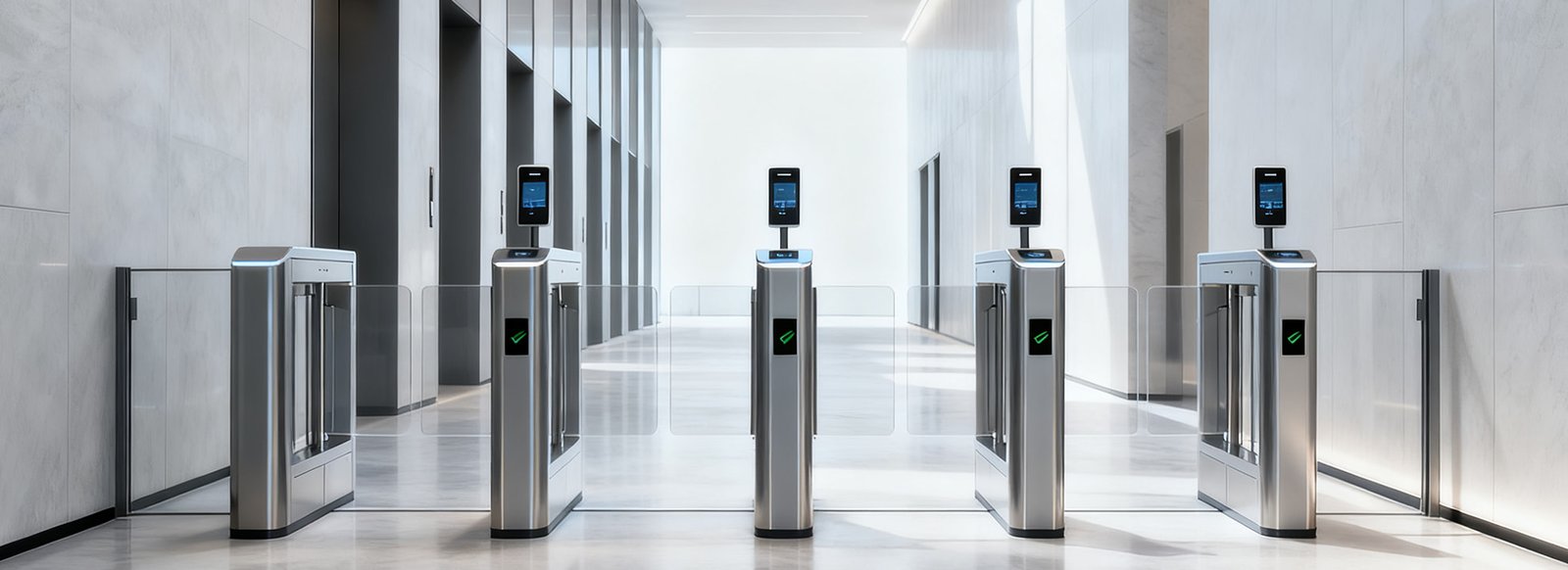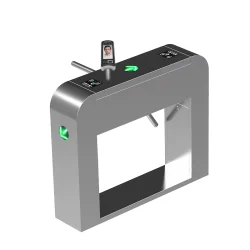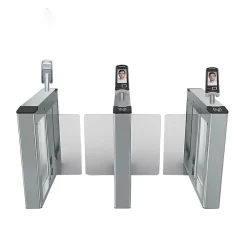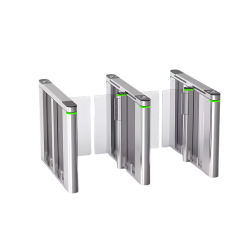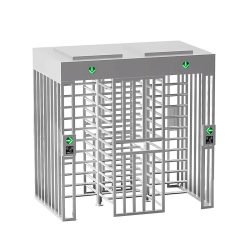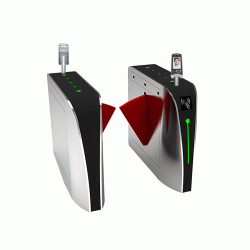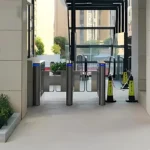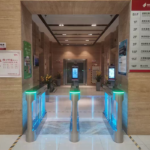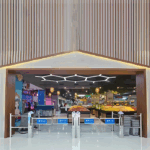In today’s world, where safety and efficiency are top priorities, organizations are turning to advanced physical security systems to manage entry and exit points. One of the most effective solutions is the security turnstile gate. Designed to regulate pedestrian flow while preventing unauthorized access, turnstile gates are now a cornerstone of modern access control systems. This article explores how security turnstile gates work, their benefits, types, and the industries that rely on them for effective security management.
What is a Security Turnstile Gate?
A security turnstile gate is a physical barrier that allows controlled entry for authorized individuals while blocking or deterring unauthorized users. Unlike standard doors or barriers, turnstiles integrate with access control systems such as biometric recognition, RFID cards, QR code scanners, and PIN pads. By combining physical restriction with electronic verification, they provide a dual layer of security that is difficult to bypass.
How Security Turnstile Gates Work
The operation of a security turnstile gate is designed to be simple, seamless, and highly effective within any modern access control system. By combining biometric authentication, smart credentials, and automated barrier control, these gates create a secure passageway that prevents unauthorized entry. The process typically follows these key steps:
1. Authentication
Users first present a valid access credential, such as a fingerprint scan, RFID/IC card, facial recognition, or mobile QR code. Many security turnstile gates also support multi-factor authentication, ensuring stronger protection in high-security environments.
2. Verification
The system then cross-checks the input against the stored data in the access control software or central database. Advanced algorithms ensure fast identity verification with a low error rate, keeping entry both secure and efficient.
3. Passage Control
Once authentication is successful, the turnstile barrier—whether it’s a swing gate, flap barrier, or full-height turnstile—automatically opens to allow passage. If the credential is invalid or unauthorized, the gate remains locked, effectively preventing entry and reducing the risk of tailgating or forced intrusion.
4. Data Logging & Monitoring
Every transaction is automatically recorded in the access control management system, providing administrators with real-time monitoring, audit trails, and reporting functions. This not only enhances security oversight but also supports compliance requirements for industries such as finance, government, and critical infrastructure.
Through this integrated process, security turnstile gates ensure that only authorized personnel gain access to restricted areas, delivering a reliable, scalable, and intelligent solution for modern facility security management.
Video demonstration
Key Benefits of Security Turnstile Gates
Security turnstile gates offer a wide range of advantages for modern facilities, combining access control, automation, and advanced monitoring to ensure safety and efficiency. The main benefits include:
Enhanced Security
Turnstile gates act as a controlled access point, requiring identity verification before entry. By preventing unauthorized access, tailgating, and internal security breaches, they significantly strengthen facility security and reduce the risk of fraud or theft.
Seamless Integration with Biometric Systems
Modern turnstiles can integrate with biometric authentication technologies such as fingerprint scanners, facial recognition devices, palm vein scanners, and iris recognition systems. This multi-layered authentication approach ensures high-security access control beyond traditional cards or PIN codes.
Efficient Crowd Management
Turnstile gates regulate the flow of people, making them ideal for high-traffic locations like airports, stadiums, corporate offices, and metro stations. By controlling entry rates, they reduce congestion, prevent bottlenecks, and maintain orderly access, enhancing both security and user experience.
Real-Time Monitoring and Reporting
Every access attempt—successful or denied—is automatically recorded in the access control management system. Administrators can generate instant reports, track attendance patterns, and respond quickly to irregular activities, supporting compliance and operational oversight.
Reduced Staffing Costs
By automating entry verification, turnstile gates minimize the need for multiple security personnel at each access point. This reduces long-term operational expenses while maintaining a high level of security across the facility.
Scalability and Flexibility
Turnstile systems are highly scalable, supporting everything from small office entrances to large-scale national or corporate facilities. They can be configured with different barrier types, authentication methods, and integration with building management systems, making them a flexible solution for evolving security needs.
Types of Security Turnstile Gates
Different facilities and security requirements call for different turnstile gate designs. Each type balances security level, speed, and space efficiency, allowing organizations to select the most suitable solution:
1. Tripod Turnstiles
Tripod turnstiles are compact, cost-effective, and easy to install, making them ideal for gyms, schools, small offices, and retail stores. They feature three rotating arms that control entry one person at a time, preventing unauthorized access while maintaining smooth traffic flow. These gates are often paired with card readers or QR code scanners for simple, reliable access control.
2. Swing Gates
Swing gates offer a wider passage than traditional tripod turnstiles, making them perfect for people carrying luggage, using wheelchairs, or transporting equipment. They operate with a smooth swinging barrier that opens upon authentication and integrates easily with biometric systems such as fingerprint, facial recognition, or palm vein scanners. Swing gates are commonly used in corporate offices, airports, and hospitals.
3. Speed Gates
Speed gates feature a sleek, modern design and provide rapid opening and closing, allowing high-volume traffic to pass quickly while maintaining security. Equipped with infrared sensors and anti-tailgating technology, they prevent unauthorized entry and ensure smooth crowd management. Speed gates are ideal for corporate buildings, airports, hotels, and metro stations where aesthetics and efficiency are equally important.
4. Full-Height Turnstiles
Full-height turnstiles offer maximum security by completely blocking unauthorized passage. They are commonly installed in prisons, stadiums, industrial facilities, and data centers. These gates often feature robust steel construction, integration with access control systems, and anti-climb or anti-bypass features, making them suitable for high-risk environments requiring strict security.
5. Flap Turnstile Gates
Flap gates, also known as wing gates, combine compact design with high-speed operation. The retractable wings open after successful authentication and close immediately to prevent unauthorized access. They are widely used in offices, commercial buildings, and metro stations. Flap gates integrate seamlessly with biometric devices, RFID cards, and mobile QR codes, providing a modern, safe, and efficient access solution.
Applications of Security Turnstile Gates
Security turnstile gates are used across various industries where access control and monitoring are essential:
-
Corporate Offices – Secure staff entrances and visitor management.
-
Transportation Hubs – Airports, train stations, and subways use turnstiles for ticket validation and passenger control.
-
Government Facilities – Protect sensitive areas with biometric-integrated gates.
-
Healthcare Institutions – Manage access to restricted areas like labs and pharmacies.
-
Sports and Entertainment Venues – Ensure ticketed entry while preventing overcrowding.
-
Educational Institutions – Control access to campuses and dormitories.
Conclusion
A security turnstile gate is more than just a barrier—it is a critical component of modern access control systems. By combining physical security with biometric or digital authentication, turnstile gates improve security, streamline entry management, and provide real-time monitoring. From airports to corporate offices, these gates are essential for any organization looking to balance efficiency with safety.

